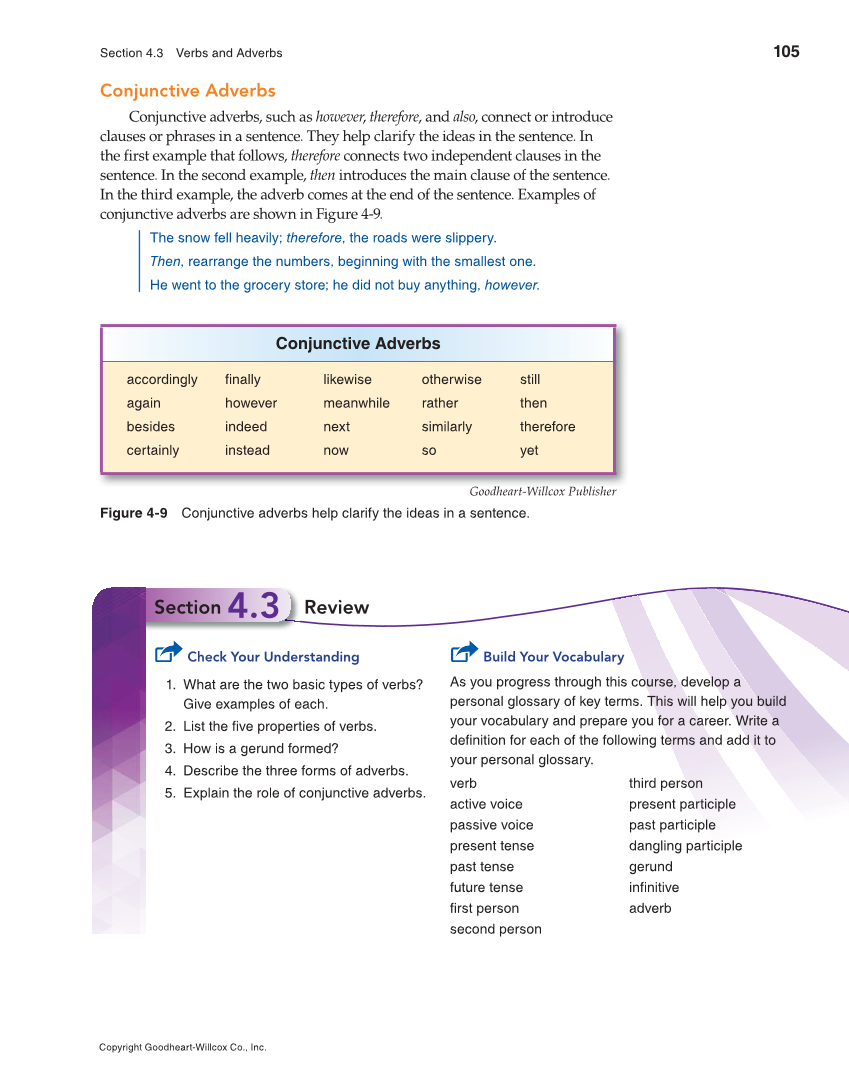105 Section 4.3 Verbs and Adverbs Copyright Goodheart-Willcox Co., Inc. Conjunctive Adverbs Conjunctive adverbs, such as however, therefore, and also, connect or introduce clauses or phrases in a sentence. They help clarify the ideas in the sentence. In the first example that follows, therefore connects two independent clauses in the sentence. In the second example, then introduces the main clause of the sentence. In the third example, the adverb comes at the end of the sentence. Examples of conjunctive adverbs are shown in Figure 4-9. The snow fell heavily therefore, the roads were slippery. Then, rearrange the numbers, beginning with the smallest one. He went to the grocery store he did not buy anything, however. Goodheart-Willcox PublisherhiblP Figure 4-9 Conjunctive adverbs help clarify the ideas in a sentence. G dh t Will Conjunctive Adverbs accordingly again besides certainly finally however indeed instead likewise meanwhile next now otherwise rather similarly so still then therefore yet Build Your Vocabulary As you progress through this course, develop a personal glossary of key terms. This will help you build your vocabulary and prepare you for a career. Write a definition for each of the following terms and add it to your personal glossary. verb active voice passive voice present tense past tense future tense first person second person third person present participle past participle dangling participle gerund infinitive adverb Section 4.3 Review Check Your Understanding 1. What are the two basic types of verbs? Give examples of each. 2. List the five properties of verbs. 3. How is a gerund formed? 4. Describe the three forms of adverbs. 5. Explain the role of conjunctive adverbs.
